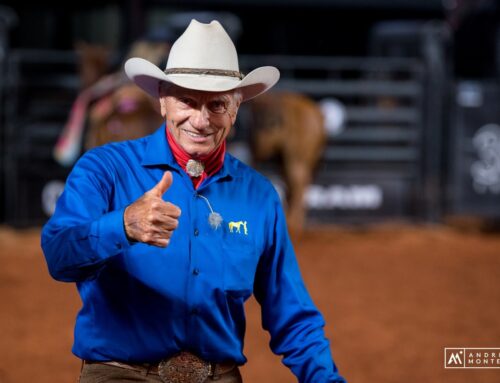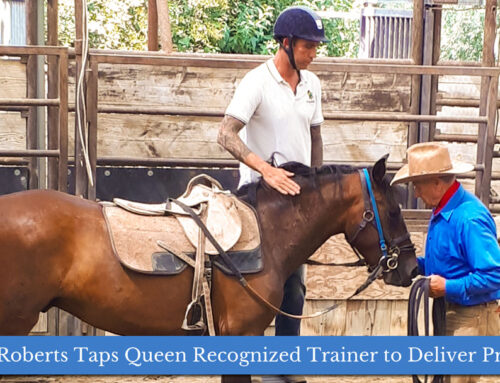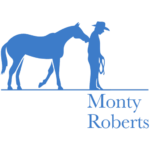 A century ago American Thoroughbreds were arguably the most important performance horses in the U.S., and they were bred to race long distances. Early American horsemen decided that they would breed differently for an even faster horse, at least for a ¼ of a mile that is.
A century ago American Thoroughbreds were arguably the most important performance horses in the U.S., and they were bred to race long distances. Early American horsemen decided that they would breed differently for an even faster horse, at least for a ¼ of a mile that is.
The aptly named Quarter Horse contained a fair amount of Thoroughbred blood. Quarter Horse racing was exciting but the breed found its real talent on the Western frontier with cattle and land.
With muscular hindquarters, their fast sprint was a critical attribute for cattle sorting and herding. More compact and sturdy than the Thoroughbred, their durable bodies were better suited for packing into the mountains and maneuvering rocky trails.
Cowboys found their sensible nature and instinct for herding to be ideal for the cattle industry which dates back to the 1600s in the United States. The original Spanish Barb horses were brought from Europe to help the Spanish Conquistadores travel the land. The imported English race horses eventually crossed with the Barbs and became the Colonial Short Horse and finally the Quarter Horse.
What is your goal in buying a Quarter Horse?
The versatility of the Quarter Horse is legend, so your goals can be met if you know how to shop for a horse that is right for your abilities. First, you need to decide as to what is the most important aspect of the horse experience you desire: trail riding, showing the reined cow horse, ranch riding, Western pleasure, halter classes. All of these disciplines and activities can be accomplished with the Quarter Horse’s practical mind, his conformation and his looks.
If this will be your first horse, it’s important that he or she be gentle, you don’t want to buy a horse that is untrained and green.
A favorite admonishment of mine is “green on green equals black and blue.”
Also, if you are inexperienced, do you plan on boarding your horse in a stable with a stable manager or trainer who can educate you on ways to be safe? The availability of instruction is a critical element in your decision and can make the difference between a good experience or a stack of woes, ranging from being taken by an unscrupulous seller to being overmatched by your horse.
Of course, for the experienced rider, other things are more important than gentleness.
Performance and training are going to be all important as well as the age and health of the horse. A good vet and a good trainer can become your greatest allies, especially if this is a new discipline for you.
Your goals and experience will each contribute to the relationship with the horse, and are all-important. An excellent trainer can read the candidates for their “history.” You should ask them to judge the horse’s reactions to know how the horse was treated and how willing is he now to partner with you on this new adventure.
You are looking for a horse that is experienced in the events with which you would like to participate. Therefore, it’s important to find a stable or trainer who specializes in these events.
The age and health of the horse can also be important choices for a positive experience, or not if there will be far too many veterinarian bills. Find a structurally correct horse, built for the job you will do, compact for trail, or more leg on a hunter.
A good trainer should be able to weigh your choices between a horse that can get you up the hill or conversely one that is a bit too much “over the hill” for what you want to do.
Once you have narrowed your choices to 3 – 4 horses, it’s important to ride these horses in a safe environment to see if they suit your needs. If you are looking for a ranch riding horse, you would ask to ride in a setting that would simulate a ranch riding environment, and so on.
Once you have gone through the choices and the horse that is compatible with your needs is identified, call the vet. Prior to purchase, the vet usually asks what you want to do with the horse. No horse is perfect. A balanced approach will keep horses transitioning to optimum homes with happy horses and happy owners.
Growing up on Quarter Horses, I can attest to their athleticism and versatility. I competed on Quarter Horses in youth divisions and enjoyed the Western disciplines, but I also saddled up and showed my Quarter Horse in English classes when aiming for High Point awards.
My father, Monty Roberts, owned and competed on the Hall of Famer Johnny Tivio, together winning multiple championships in the Western show ring. Johnny was a fourth generation descendant of King P-234 — arguably the most famous Quarter Horse that ever lived — influencing the breed in the early years of the American Quarter Horse Association registration.
Remarkably, the AQHA breed registry is young, having formed in 1940. The horsemen who created it wanted to recognize and preserve the long history and pedigree of the ranch horse that was credited with opening the West to the development of the United States. Their foresight is our opportunity to choose a living legend.
Enjoy the process!
Article by Debbie Roberts Loucks
Published for the Santa Ynez Valley News, July 2019




